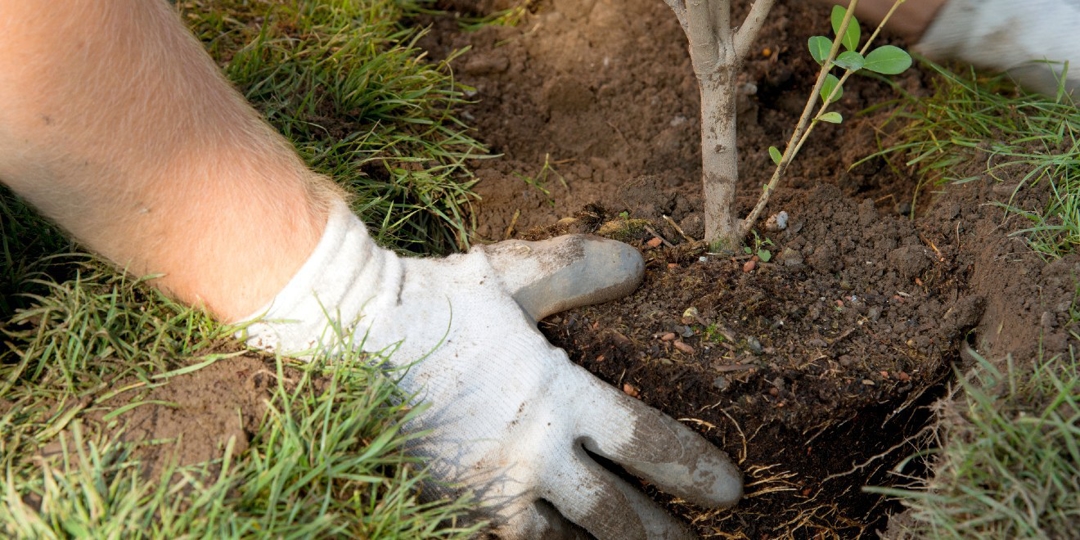Oh no! You’ve got a new tree you really want to get in the ground, but you’ve missed the ideal planting window in spring. Is it okay to plant it once things start heating up, or should you wait for fall?
Learn more about whether trees can be planted in summer, the extra care they need to thrive, and what struggles you could face after planting.
Can You Plant Trees in Summer?
Yes, but it is not recommended. Whenever possible, you should wait until spring or fall to plant your trees, when they’re entering their growth stage or getting ready for dormancy. Spring and fall planting put the least stress on the tree. If you live in a region where the temperature regularly gets over 90°F in the summer, avoid summer planting if you possibly can. Container-grown and root-ball trees and shrubs stand the best chance with late planting since they typically have a stronger root system than bare-root trees. If you’re looking to transplant trees, we recommend waiting for mid to late fall.
However, while it’s never ideal, summer planting can be done – but you need to take special care during planting and in the weeks after. This is because hot weather, lack of rain, and copious amounts of sun put stress on a new tree and make keeping it alive more difficult.
Here’s how to complete a summer tree planting and the special care it takes to give your newly planted tree the best chance to make it.
How to Plant Trees in Summer and Help Them Thrive
If you decide to go ahead and plant a new tree in the summer, you can mostly plant the tree as you would in the spring: Dig a hole two to three times as wide as the container or root ball, plant in unamended soil, and cover the roots without putting dirt over the root crown.
But here are three extra considerations to take for summer planting:
- Make the hole shallower. Your tree’s root crown should never be covered when planting, but it’s especially vital in the summer. Roots grow downwards very easily but have a hard time growing upward when necessary. Because summer growth is focused on leaves and branches over roots, a tree planted in summer may not have the surface-level roots it needs. By planting more shallowly, you ensure that you leave the root crown exposed AND that your tree’s roots have the easier job of growing outward and down, instead of trying to grow upward.
- Water more deeply, and close to the trunk. Consistent watering is vital to help new trees survive the summer. It’s more important to water deeply than often. Use a soaker hose or leave a regular garden hose at a trickle for a few hours to saturate the soil.
Water around the base of the tree, where the roots will be concentrated. Start when the tree is first planted, watering every day for two weeks. Then water every two to three days for the next ten weeks, checking the soil to make sure it doesn’t completely dry out. Knowing how often to water a newly planted tree in summer means keeping an eye on the weather; check back more often if the forecast is dry.
- Mulch. Mulching helps regulate the soil temperature and increases water retention, as well as discourages weeds. Carefully spread mulch around the trunk without piling it against the tree or covering the root crown.
The Best Trees to Plant in Summer h3
You can also increase your summer planting odds by choosing certain species. Heat-resistant trees that can be planted in summer and stand the best chance of surviving include:
- black tupelos
- white firs
- hackberries
- yellowwoods
- green hawthorns (Winter King variety)
- Kentucky coffeetrees
- American sweetgums
- lacebark pines
- crepe myrtles
- honey locusts
The Cons of Planting Trees in the Summer
In summer, trees focus most of their energy on photosynthesizing, leaving less energy to properly establish a root system. Because of all the sunshine, your tree could outgrow its immature roots rather than strongly anchoring.
Planting from mid-fall to early spring gives your tree a better chance to grow the roots it needs to drink water, gather nutrients, and anchor itself in the soil.
The summer heat may also stress your newly planted tree, especially if you don’t water it enough. Less rain in hot months means less natural, soaking water that would normally fuel the tree’s growth. Stressed trees may not grow properly, or they may be more vulnerable to pests and disease.
Flowering trees may not flower the year you plant them. They may also flower late, then not produce buds during the second year of growth. While this doesn’t harm the tree, it can be disappointing if you were looking forward to beautiful blossoms.
Get Professional Summer Tree Care to Support Your Newly Planted Trees
Planting summer trees? The professional arborists at your locally owned and operated Monster Tree Service have the knowledge and training to help newly planted trees through a tough summer.
We’ll recommend treatments for heat stress and treat disease in new trees. When you need help, including advice, just give us a call at (888) 744-0155 or request a free estimate today.

